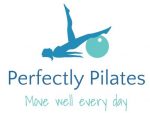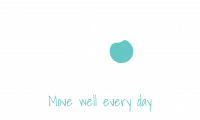This week is balance awareness week! Balance is a skill and a complex one that involves the brain, muscles, and parts of the inner ear. And as with any other skill, if you stop practicing, it’s likely you’ll lose this skill over time, making it harder for you to stay upright and maintain proper posture. As children, we play with balance and develop it quite naturally but as we get older, and often with that comes being less mobile (sitting down at a desk, in cars, or on public transport for hours each day), we don’t often think about our balance. Injury and medical conditions can also lead to our balance deteriorating, which knocks our confidence and leaves us more afraid of slipping, tripping and falling, and hurting ourselves.
However, through Pilates, there is a range of exercises that can improve balance and strengthen the major muscle groups in the body and around your core.
Maintaining good balance is so important as we get older as we’re less likely to fall if we have good balance, and the act of standing on one leg strengthens our leg and hip bones, reducing the likelihood of breaking a bone if we do fall. This is essential if you have a bone condition such as Osteopenia or Osteoporosis.
Here are some exercises that you can perform at home in a matter of minutes and begin improving your balance and enjoying the benefits that bring to your day-to-day life.
If you suffer from a condition that can impact balance, such as osteoporosis, vertigo, dizziness, stroke, or Parkinson’s Disease, you can still practice these exercises, in fact, it’s essential to help prevent deterioration of balance, coordination, and strength. Just use items to support you, such as a wall or chair to hold to support you.
Here are 7 exercises you can try at home with minimal equipment, and with consistency and practice, you’ll start to see improvements in your confidence and your day-to-day life.
1. A very simple yet effective movement to improve balance is to stand and slowly lift your heels from the floor, coming into standing on your tiptoes, then lower your heels back down and repeat at least 10 times. A great way to build up the effectiveness and boost the benefits is to slow down the movement as much as possible – slowly ‘peel’ your heels off the floor and control how long you stay lifted and then slowly press your heels back down. You’ll quickly feel how much you’re getting better at balancing on your toes and how it’s strengthening your calf muscles (back of lower legs), ankles, and gluteal (buttock) muscles.
2. Your next step is to try standing one leg Lift one leg off the floor and raise your knee to be in line with your hips and try to hold this position for a few seconds. Keep practicing and, over time, start to hold your balance for longer; perhaps you can get to 10 seconds or more! If this is not achievable for you, there are many ways to break down this challenge and give yourself more support. After all, you’re training your body to improve gradually from what it’s capable of now to become capable of more with practice and perseverance. Perfection shouldn’t be expected immediately. Start by shifting your weight onto one foot and begin to lift the other off the floor, slowly. You can support yourself by gently resting your fingertips on the backrest of a chair or kitchen bench placed in front of you.
It’s important that the chair or bench is about waist height, as you shouldn’t be bending over during this exercise. If this is difficult, you can keep your toes lightly on the floor, as even this will begin to challenge your leg, gluteal (buttock) muscles, and core, which in turn strengthens and stabilises your hips, improving your balance over time, as the exercise is repeated.
Once you can hold this position with confidence, you can begin to repeat the motion of lifting your knee to hip height. This will help to strengthen your hip-flexor muscles too, giving more support to your hips.
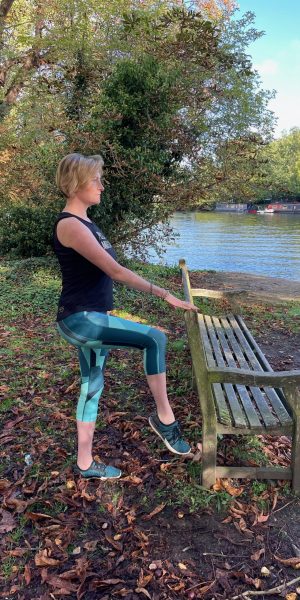
3. Another exercise that is great for improving balance is a form of a lunge. Starting from a split lunge position, as though you have just taken a large stride, turn your head to look over your left and then your right shoulder, in turn, repeating this motion 10 – 20 times. This is a great balance challenge and you will likely find that you find this exercise easier with one leg in front of the other. Focus on the leg that is more challenging, and you will begin to see improvements in the strength of your muscle and the brain-to-limb connection, known as the neural pathway.
4. Begin by standing as you did for exercise 2, using a chair, wall or bench, etc. for support if needed, but this time, lift your leg out to your side; not too far, just to where you feel you can still stand tall and straight without leaning. This can be quite challenging due to a general lack of strength in the side buttock muscles (gluteus medius) to lift the leg out sideways. So, start just trying to lift it out sideways for a couple of seconds and then try to slow down and hold your lag out longer. Perhaps you’ll build up to 5 or even 10 seconds after practicing for a week or so. Keep standing straight and tall as you do this for better gluteal and core challenges, and less risk of falling.
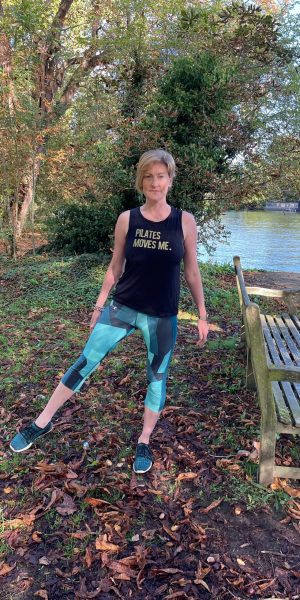
5. So now that you’ve mastered standing on one leg, let’s up the ante! This will really throw off your balance so don’t expect to be able to do this well at first as it’s really challenging, but such exercises significantly develop your cognitive ability as well as balance and core control. Stand on one leg with your other leg lifted in front of you and slowly, turn your head to the right and then back to centre and put your foot back down. Then lift the same leg and turn your head slowly to the left then back to centre. Once you get better at this, try keeping your leg lifted as you continue turning your head to the left and right and repeat.
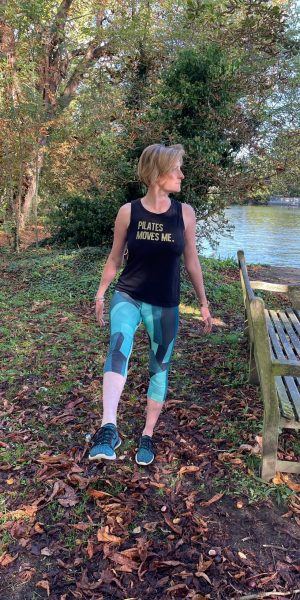
6. We have a BIG challenge if you’re ready! This is a big one for strength too. Try standing on one leg with the other leg lifted in front of you at hip height and then try slowly squatting on one leg! As you stand on one leg, send your buttocks back and down towards the floor and then lift back up. Try with one hand on the wall or chair to your side for the support you may need. Try to do 3-5 and then build up over time, training yourself to move away from the support of the wall or chair. Be cautious if you have osteoporosis in your lower back, knees, or hips. It’s still an excellent exercise to help strengthen hips and knee joints and leg bones, but be careful to build up to this over a few weeks, and be sure to use the wall so you can control your balance and how deeply you squat.
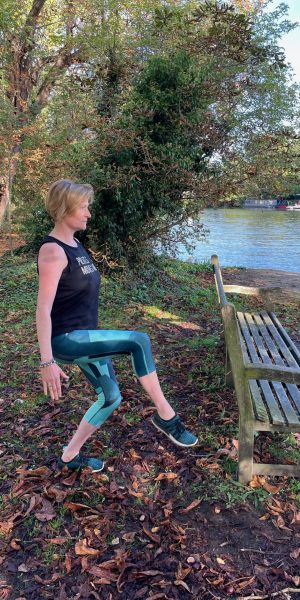
7. Now you’ve really worked on your balance and strength at home, let’s take your new ability and confidence to the test outside! This is a key reason for training your balance after all. So, time to go for a walk outdoors on uneven surfaces with stones and rocks underfoot, on soft sand on the beach, and on landscapes with undulations and elevations to further challenge your balance while moving through the world. This will continue to develop your balance and confidence as you’ll see the real benefits of your hard work so far and move around with much more confidence, elegance, and better posture!
As Winter comes around, you’ll be far less likely to slip on icy surfaces and snow.
You’ll be amazed at how much better you are with practice and the new confidence and agility you’ll have when walking up and down stairs, and doing other exercises. Even if you don’t have an exercise regime, your new abilities may be just the boost you needed to start something new and good for you.
There are many benefits of Pilates for people of all ages, specifically for those who are middle-aged and beyond. Our online and in-person Pilates classes are perfect for beginners and people who have participated in Pilates previously, with minimal or no equipment and a small open space in the home, you can begin to see the benefits of Pilates for yourself soon!
We specialise in working with people in their middle age and retirement who want to be more mobile, flexible, and independent in their later life.
Feel free to contact me at Sarah@perfectlypilates.co.uk for more information, you can also find more information about our classes here: https://www.perfectlypilates.co.uk/
For more information and to see our videos on balance and many other moving well and well-being tips, follow us on the following social media platforms:
YouTube https://www.youtube.com/channel/UCElco8-O75PQqBSyBQ-o1Lg
